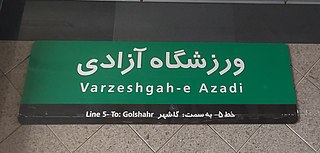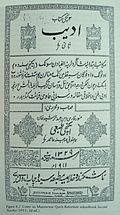
Kazakh or Qazaq is a Turkic language of the Kipchak branch spoken in Central Asia by Kazakhs. It is closely related to Nogai, Kyrgyz and Karakalpak. It is the official language of Kazakhstan and a significant minority language in the Ili Kazakh Autonomous Prefecture in Xinjiang, north-western China, and in the Bayan-Ölgii Province of western Mongolia. The language is also spoken by many ethnic Kazakhs throughout the former Soviet Union, Germany, and Turkey.

Uzbek, formerly known as Turki, is a Karluk Turkic language spoken by Uzbeks. It is the official and national language of Uzbekistan and formally succeeded Chagatai, an earlier Karluk language also known as "Turki", as the literary language of Uzbekistan in the 1920s.
Chechen is a Northeast Caucasian language spoken by approximately 1.8 million people, mostly in the Chechen Republic and by members of the Chechen diaspora throughout Russia and the rest of Europe, Jordan, Austria, Turkey, Azerbaijan, Ukraine, Central Asia and Georgia.

Turkmen, sometimes referred to as Turkmen Turkic or Turkmen Turkish, is a Turkic language of the Oghuz branch spoken by the Turkmens of Central Asia. It has an estimated 4.3 million native speakers in Turkmenistan, and a further 719,000 speakers in northeastern Iran and 1.5 million people in northwestern Afghanistan, where it has no official status. Turkmen is also spoken to lesser varying degrees in Turkmen communities of Uzbekistan and Tajikistan and by diaspora communities, primarily in Turkey and Russia.

Tajik, also called Tajiki Persian or Tajiki, is the variety of Persian spoken in Tajikistan and Uzbekistan by Tajiks. It is closely related to neighbouring Dari of Afghanistan with which it forms a continuum of mutually intelligible varieties of the Persian language. Several scholars consider Tajik as a dialectal variety of Persian rather than a language on its own. The popularity of this conception of Tajik as a variety of Persian was such that, during the period in which Tajik intellectuals were trying to establish Tajik as a language separate from Persian, prominent intellectual Sadriddin Ayni counterargued that Tajik was not a "bastardised dialect" of Persian. The issue of whether Tajik and Persian are to be considered two dialects of a single language or two discrete languages has political sides to it.

Uyghur or Uighur is a Turkic language written in a Uyghur Perso-Arabic script with 8–13 million speakers, spoken primarily by the Uyghur people in the Xinjiang Uyghur Autonomous Region of Western China. Apart from Xinjiang, significant communities of Uyghur speakers are also located in Kazakhstan, Pakistan, Kyrgyzstan, and Uzbekistan, and various other countries have Uyghur-speaking expatriate communities. Uyghur is an official language of the Xinjiang Uyghur Autonomous Region; it is widely used in both social and official spheres, as well as in print, television, and radio. Other ethnic minorities in Xinjiang also use Uyghur as a common language.

Shahmukhi is the right-to-left abjad-based script developed from the Perso-Arabic alphabet used for the Punjabi language varieties, predominantly in Punjab, Pakistan. It is generally written in the Nastaʿlīq calligraphic hand, which is also used for Persian and Urdu. Shahmukhi is one of the two standard scripts used for Punjabi, the other being Gurmukhi used mainly in Punjab, India.
The Azerbaijani alphabet has three versions which includes the Arabic, Latin, and Cyrillic alphabets.

The Persian alphabet, also known as the Perso-Arabic script, is the right-to-left alphabet used for the Persian language. It is a variation of the Arabic alphabet with five additional letters: پ چ ژ گ, in addition the obsolete ڤ.

Wakhi is an Indo-European language in the Eastern Iranian branch of the language family spoken today in Wakhan District, Northern Afghanistan, and also in Tajikistan, Northern Pakistan and Western China.

The Turkmen alphabet refers to variants of the Latin alphabet, Cyrillic alphabet, or Arabic alphabet used for writing of the Turkmen language.

The romanization of Arabic is the systematic rendering of written and spoken Arabic in the Latin script. Romanized Arabic is used for various purposes, among them transcription of names and titles, cataloging Arabic language works, language education when used instead of or alongside the Arabic script, and representation of the language in scientific publications by linguists. These formal systems, which often make use of diacritics and non-standard Latin characters and are used in academic settings or for the benefit of non-speakers, contrast with informal means of written communication used by speakers such as the Latin-based Arabic chat alphabet.

The Tajik language has been written in three alphabets over the course of its history: an adaptation of the Perso-Arabic script, an adaptation of the Latin script and an adaptation of the Cyrillic script. Any script used specifically for Tajik may be referred to as the Tajik alphabet, which is written as алифбои тоҷикӣ in Cyrillic characters, الفبای تاجیکی with Perso-Arabic script and alifboji toçikī in Latin script.
The Ottoman Turkish alphabet is a version of the Perso-Arabic script used to write Ottoman Turkish until 1928, when it was replaced by the Latin-based modern Turkish alphabet.

Shughni or Khughni, is one of the Pamir languages of the Southeastern Iranian language group. Its distribution is in the Gorno-Badakhshan Autonomous Region in Tajikistan, Badakhshan Province in Afghanistan, Chitral district in Pakistan and Taxkorgan Tajik Autonomous County in China.

The Arabic script is the writing system used for Arabic and several other languages of Asia and Africa. It is the second-most widely used alphabetic writing system in the world, the second-most widely used writing system in the world by number of countries using it, and the third-most by number of users.

The Urdu alphabet is the right-to-left alphabet used for writing Urdu. It is a modification of the Persian alphabet, which itself is derived from the Arabic script. It has official status in the republics of Pakistan, India and South Africa. The Urdu alphabet has up to 39 or 40 distinct letters with no distinct letter cases and is typically written in the calligraphic Nastaʿlīq script, whereas Arabic is more commonly written in the Naskh style.

Romanization or Latinization of Persian is the representation of the Persian language with the Latin script. Several different romanization schemes exist, each with its own set of rules driven by its own set of ideological goals.

The Uzbek language has been written in various scripts: Latin, Cyrillic and Arabic. The language traditionally used Arabic script, but the official Uzbek government under the Soviet Union started to use Cyrillic in 1940, which is when widespread literacy campaigns were initiated by the Soviet government across the Union. In Uzbekistan, the Latin script was officially reintroduced, along with Cyrillic, in 1992, and a full transition to Latin script is awaiting implementation. In neighboring Kyrgyzstan and Tajikistan, people use Cyrillic. In the Xinjiang region of China, some Uzbek speakers write using Cyrillic, others with an alphabet based on the Uyghur Arabic alphabet. Uzbeks of Afghanistan also write the language using Arabic script, and the Arabic Uzbek alphabet is taught at some schools in the country.

The Pashto alphabet is the right-to-left abjad-based alphabet developed from the Arabic script, used for the Pashto language in Pakistan and Afghanistan. It originated in the 16th century through the works of Pir Roshan.


















